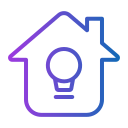
Innovations Transforming Home Automation Systems
Home automation systems have witnessed remarkable advancements in recent years, evolving from simple gadget control platforms into highly sophisticated and intuitive networks that fundamentally reshape modern living spaces. Driven by breakthroughs in artificial intelligence, connectivity, and sustainable technologies, today’s smart homes offer unmatched levels of convenience, security, and personalization. Homeowners are now able to interact effortlessly with their environments, manage energy consumption intelligently, and benefit from predictive automation that adapts seamlessly to daily routines. This page explores the latest innovations driving this transformative change and examines how they are shaping the future of residential living.
AI-Powered Intelligent Assistants
Mesh Networking Technologies
Universal Standards and Protocols
Secure Remote Access Solutions

